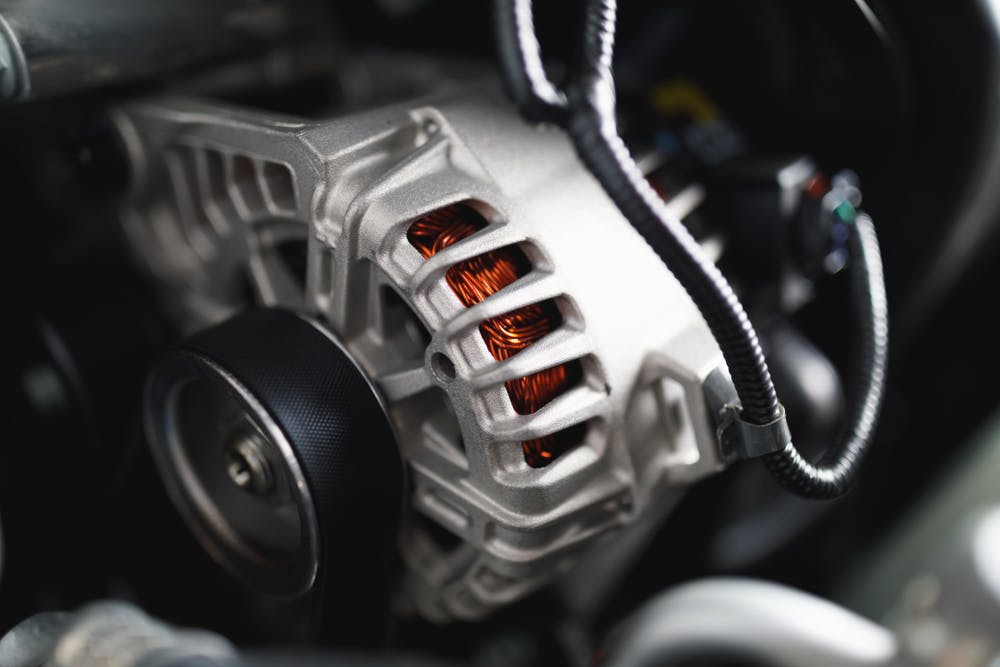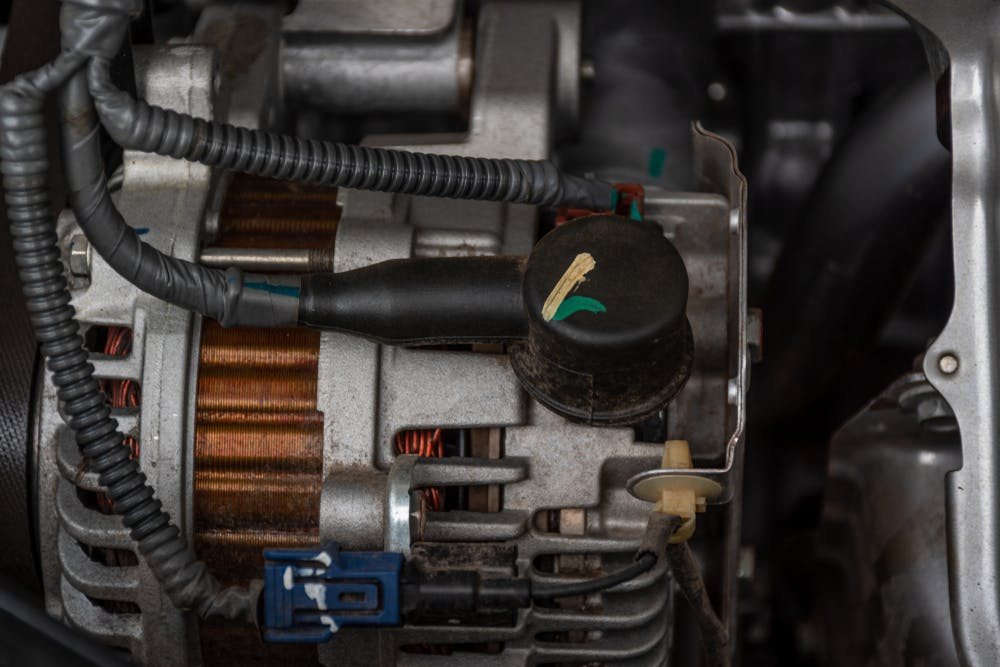What is an alternator, and what does it do?

Few car owners care about the alternators in their cars much if the vehicle’s battery can start the engine. However, if the alternator fails, two things usually happen. The battery light comes on, and the car will only run until the battery’s stored energy runs out. Therefore, alternators are critically important components in the electrical systems of all cars. Nonetheless, alternators are out of sight, out of mind electrical components that only receive attention when they fail.
There was a time when alternators and generators on cars were two different things that worked in different ways. Now, however, while cars do not use generators anymore, alternators are now often referred to as generators.
As a practical matter, the vehicle battery supplies all the electrical systems on the car with power to operate. Thus, an alternator works like a dc charger to keep the car’s battery fully charged.
This is where more confusion comes from. Many online resources will tell you that the alternator supplies the vehicle’s electrical system with power. This is not entirely correct. The fact is that any alternator is only connected to a car’s electrical system through the start battery, so-
How is electricity distributed in vehicles?
All electrical systems on a vehicle are connected to the vehicle battery through fuses. In some cases, several circuits might share one fuse. Other systems might have their own dedicated fuses.
During normal operation of the vehicle, electrical components and systems draw power from the battery to operate. Therefore, unless the alternator charges the battery, the battery will run flat.
In practice, a car battery loses only about 15% of its capacity through the normal use of a vehicle. Therefore, a car's alternator only replaces about 15% of a vehicle battery’s stored energy. If the car’s charging system works properly, the system will keep the battery fully charged. However, the alternator will not overcharge the battery because its output can be managed in one of two ways.
In simple charging systems, a voltage regulator senses the battery voltage. When the battery is fully charged the voltage regulator reduces the alternator’s output. This protects the vehicle battery against overcharging.
In advanced charging systems, the charging current is monitored and controlled by a computer that does three things. Below are some details-
- The first is to match the charging current with the actual demand for electrical power at any given moment
- The second is to protect the battery by reducing the charging current when the battery is fully charged
- The third is to monitor the battery’s state of health as it ages to make the vehicle battery last longer
What is a smart alternator?

You may have heard or read that a so-called smart alternator can reduce a vehicle’s fuel consumption. However, this is not because they are somehow smart or clever. Fuel savings are possible because a smart alternator is controlled by a computer that uses “smart” strategies to control its output. Here is what makes an alternator a “smart”-
When a battery’s state of charge is high, a conventional alternator generates only a low current. Since the magnetic fields in the alternator are weak, the engine does not use a lot of power to generate electricity.
The opposite happens when the battery’s voltage dropped because the battery has lost a lot of energy. In this case, the voltage regulator creates strong magnetic fields in a conventional alternator. This takes a lot of engine power to overcome to generate electricity.
However, the amount of engine power required to generate a high charging current depends on the size of the engine. For instance, generating a high charging current can consume as much as 15% or more of a small engine’s power. A large V8 engine develops a lot more power. Therefore, a large V8 engine might use as little 5% of its power to generate a high charging current.
Regardless of the amount of lost power, this kind of power loss is known as a “parasitic” power loss. Other sources of parasitic power losses are the air conditioning system and the water pump. These power losses are called parasitic because they consume fuel that the engine could have used to move the vehicle forward.
Here is how smart alternators are different-
Apart from not containing a replaceable voltage regulator, a smart alternator looks just like a conventional alternator. However, several design features make smart alternators very efficient. Below are some details-
- The rotor windings are designed to contain the magnetic field they create more closely around the rotor. This "focuses" the rotating magnetic field so all of the magnetic field interacts with the stationary magnetic field in the stator.
- The stator windings are optimised to reduce the gaps between the three phases of the windings. This generates a charging current with smaller “dips” between phases.
- Because of improved windings and advanced control strategies, smart alternators can generate electricity at lower engine speeds.
While improved windings increase a smart alternator’s efficiency, other advantages include the following-
- A computer matches the charging current with the power demand exactly. This greatly reduces the amount of power the engine loses to generate electricity.
- Smart alternators are usually used with AGM batteries (Absorbent Glass Mat batteries) that are more efficient than simple flooded batteries. As a rule, this means that smart alternators generate smaller charging currents
- On some vehicles, the computer that controls the charging current can disable the charging system completely for short periods. This is to reduce the load on the engine during start-up in cold temperatures. After the engine has started, the computer will re-enable the charging system in small steps to protect the drive belt
Taken together, the advantages of smart alternators greatly reduce parasitic power losses, especially on small engines. This, in turn, reduces fuel consumption, which means the engine produces less harmful exhaust emissions.
